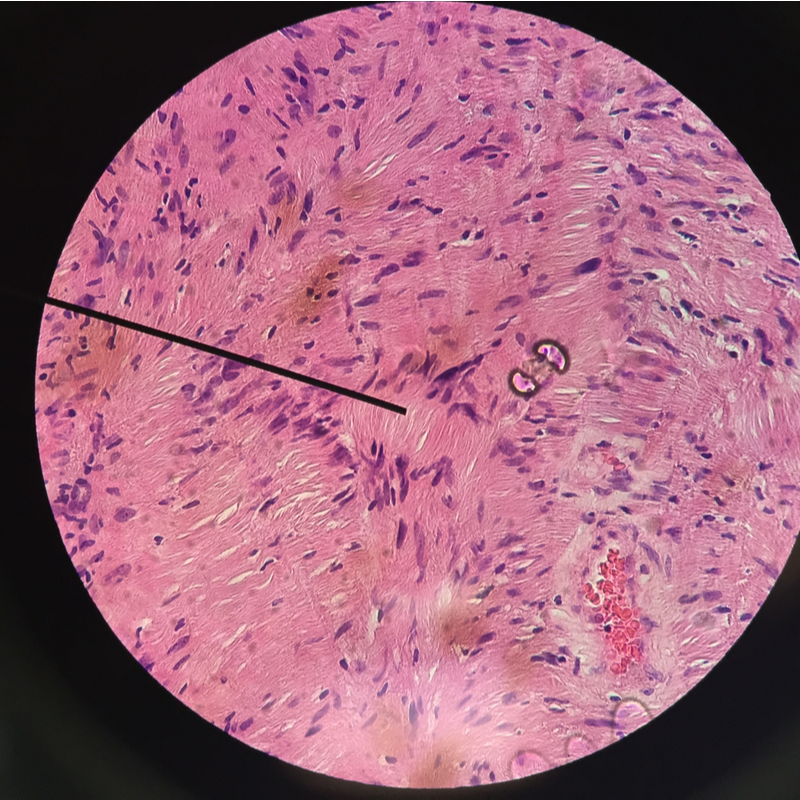
What is a neurilemmoma?
A neurilemmoma, also called schwannoma , is a benign encapsulated tumour of the peripheral nervous system. It is the most common type of tumour of the peripheral nerves and, together with neurofibromas, accounts for about 65 per cent of all neurogenic tumours. A neurilemmoma is rather slow in its growth and originates from the Schwann cells of the so-called neuroectodermal neurilemma. In less than one percent of all cases of disease, a neurilemmoma can degenerate and become malignant (malignant). An above-average number of neurilemmomas develop between the ages of 20 and 50, but they can develop in any age group.
How does a neurilemmoma develop?
A neurilemmoma develops from Schwann cells. These are so-called glial cells that grow in a spiral around the extension of the nerve cells. The Schwann cells thus create an electronic insulating layer that increases the speed of signal transmission. A neurilemmoma affects the functioning of the affected nerve.
Where do neurilemmomas occur?
Neurilemmomas form preferentially in the peripheral nerves of the head and neck region and the extensors (muscle group) of the extremities. About 3 percent of all neurilemmomas occur in the eye socket (orbita). However, it is also possible that they arise from the skin, the spinal nerves or the cranial nerves. If the 8th cranial nerve in particular is affected, doctors call it a so-called acusticus neuroma. In general, it can be said that neurilemmomas increasingly affect the sensory nerves, but more rarely they can also affect the motor and autonomic nerves. If they do not occur as neurofibromatosis, neurilemmomas are usually solitary and grow over years. In many cases, they behave as asymptomatic. In many cases, they behave asymptomatically until a certain tumour size is reached.
What are the symptoms of a neurilemmoma?
The symptoms of a neurilemmoma can vary greatly depending on the location of the tumour. However, a typical symptom of a neurilemmoma is the protrusion of one or both eyes from the eye socket (expohthalmos). In addition, the tumours can cause cyst formation, haemorrhages and/or calcifications due to their closely spaced Schwann cells (palisade form). Furthermore, depending on the size of the tumour, increased pain and/or nerve loss may occur.
In some cases, it can also happen that the nerve from whose Schwann's cells the neurilemmoma has developed is no longer functional. Paralysis symptoms are the result of this. It is common for the symptoms of a neurilemmoma to manifest themselves over time and increase in intensity, depending on the size of the tumour .
What complications can a neurilemmoma lead to?
While smaller neurilemmomas are often asymptomatic, larger neurilemmomas can displace neighbouring nerves and thus cause health complaints. For example, a neurilemmoma of the lumbar spine can, if large enough, cause chronic back pain, which can even radiate into the legs . If the tumour continues to grow, it can also lead to muscle weakness of the affected nerve. Long-lasting pain, but also sensory disturbances can be the result.
If, on the other hand, it is a neurilemmoma in the spinal canal, paraplegia can occur, since here, due to the narrow space, a displacement of the neighbouring nerves can lead to a loss of function . Neurilemmomas in the fingers or hand can cause tingling and/or numbness due to the compression of the adjacent nerves. Neurilemmomas affecting the auditory nerves may result in hearing loss, deafness, dizziness and/or tinnitus .
Since a neurilemmoma is a tumour, the symptoms described here should be clarified by a doctor as soon as possible. This applies all the more if the mobility is restricted and there are general disturbances of the organism.
How is a neurilemmoma diagnosed?
Based on the complaints, it is usually already possible for neurologists to estimate what the causes of the nervous complaints are. The usual diagnostic imaging procedures, such as a magnetic resonance imaging (MRI), can make the tumour visible. Unless it is still a relatively small tumour that is asymptomatic, it is not always possible to detect it by diagnostic imaging.
How is a neurilemmoma treated?
A neurilemmoma does not always necessarily require immediate treatment. Since it is a rather slow-growing, benign tumour, it can also initially only be observed if it is asymptomatic. In general, depending on the location of the tumour, it is possible to remove the neurilemmoma surgically. On the one hand, this can prevent further tumour growth, but on the other hand it can also counteract the symptoms of the neurilemmoma.
In the case of an operation, it may also be necessary to remove the part of the nerve affected by the tumour . As a result, it is possible that even after the operation, the symptoms will continue to persist due to the missing nerve structure.
In addition to surgery, treatment with radiation therapy is also possible. In this case, isolated radiation acts on the affected tissue and should lead to the destruction of the tumour . The duration of the treatment, but also the radiation dose, must always be made dependent on the respective tumour .
What is the prognosis for neurilemmoma?
Neurilemmomas are benign tumours, which is why the prognosis is rather good. Many neurilemmomas, even larger and more advanced tumours, can be removed surgically without any problems. In a small number of cases, the complications described above can develop. Hearing disorders are particularly frequent . On the other hand, disorders of the vestibular nerve occur more rarely. If the neurilemmoma could be completely removed by surgery , it usually does not form again. However, neurilemmomas that have not been completely removed may recur .
